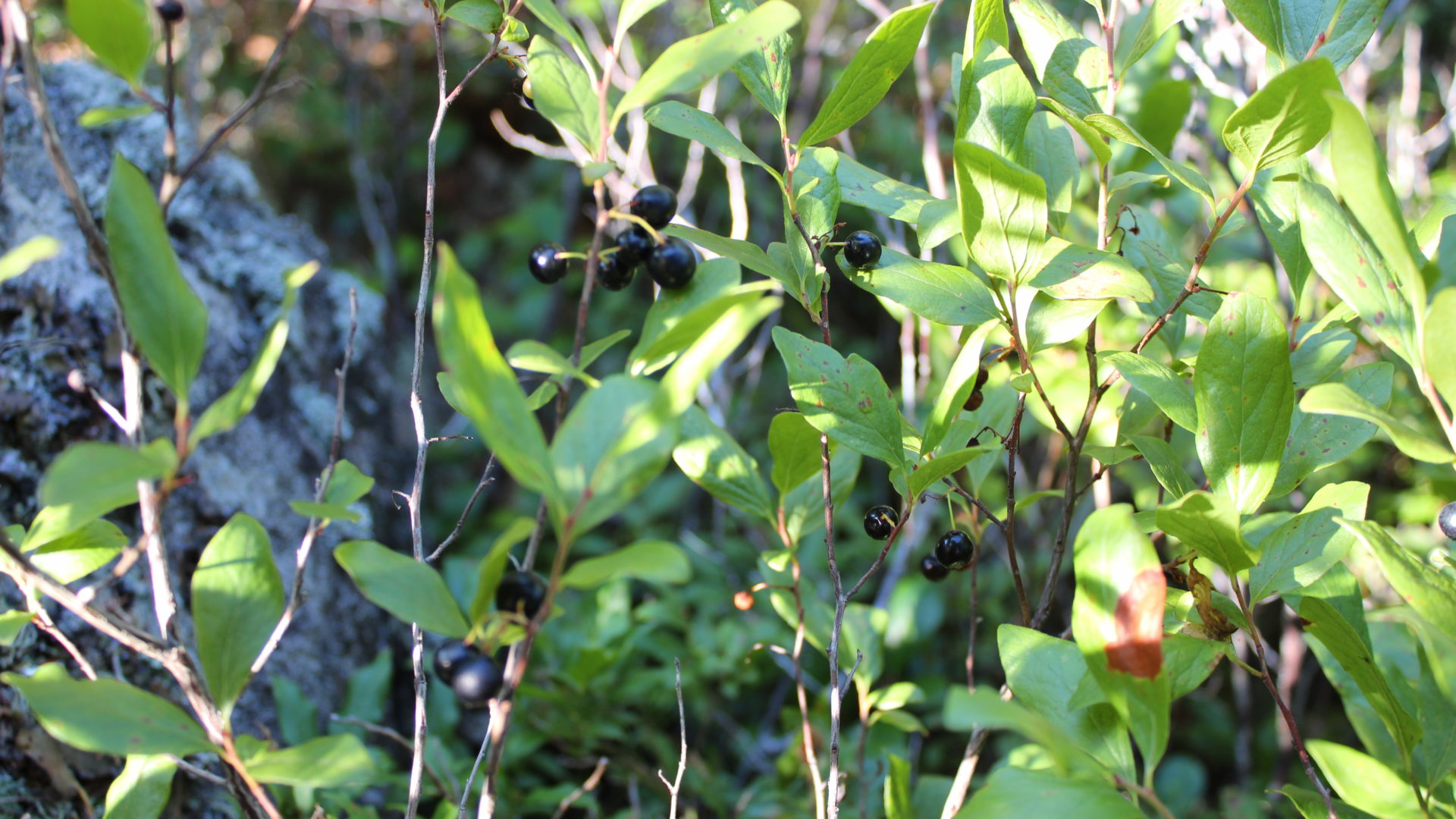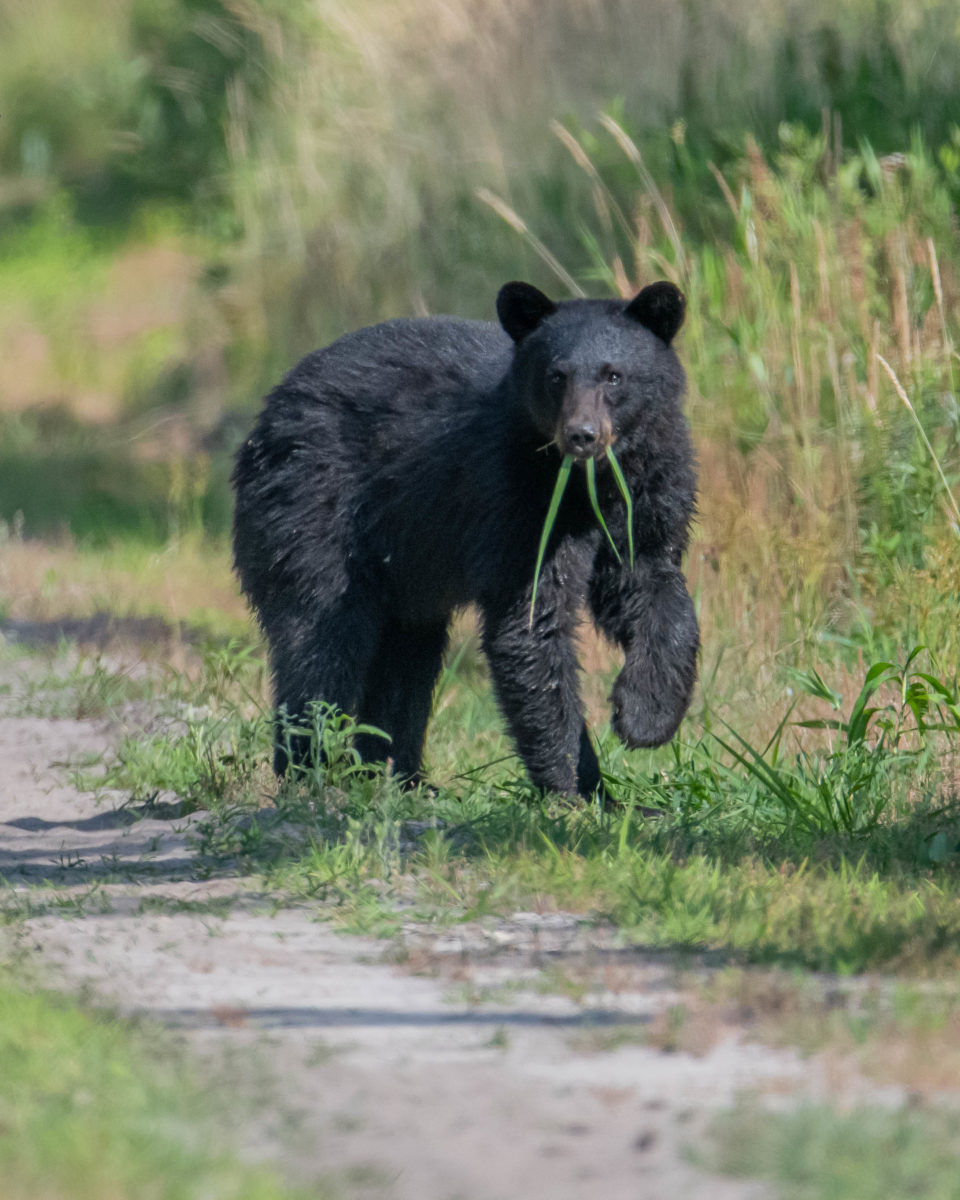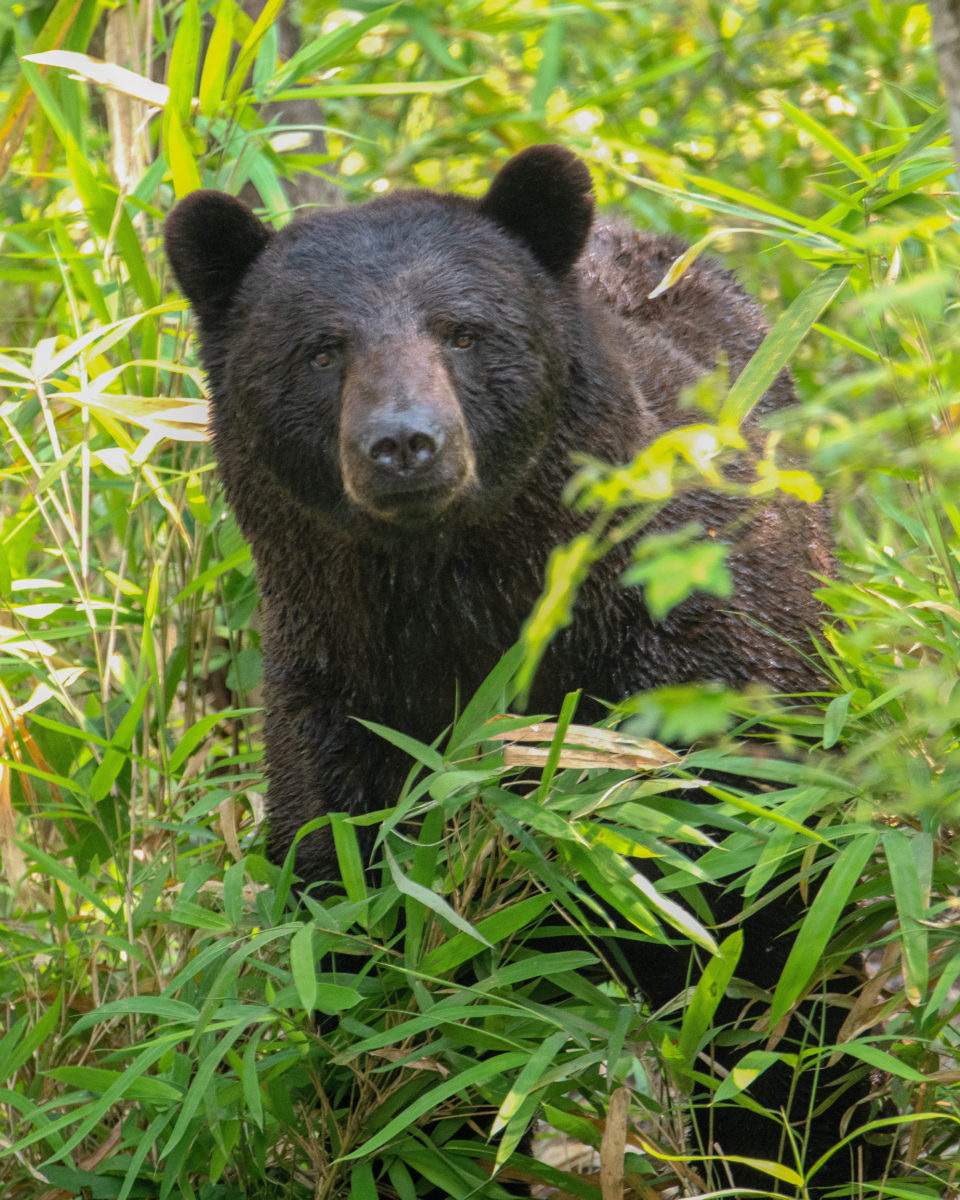Huckleberries
- American Black Bear (Ursus americanus)
Black huckleberry plants (Gaylussacia baccata) are native to Maine. This means that huckleberries occur naturally in Maine, and have evolved to grow here. Huckleberries grow in very specific soil composition, and no one has been able to grow them commercially, like we do with wild Maine blueberries.
Many animals (including humans!) enjoy eating huckleberries. They provide food for birds, rodents, deer, insects, and black bears. Black bears (Ursus americanus) live off of fat stored in their bodies for much of the winter. This means they need to eat a lot to put on weight that helps them survive. They forage in forests to find insects, animals, and plants, roots, and berries to eat. You can learn more about black bears here.

Look for evidence
Do you see huckleberry bushes on Baker Hill and Long Ledges? You might see their yellow-red flowers in June, green unripe berries in July, and blackish-purple ripe berries in August or September.
What about animals or insects eating the berries? Have you ever seen bear scat in the woods, or birds in the huckleberry bushes?
Why is it important to protect forests?
Baker Hill and Long Ledges are home to many types of plants and animals that have evolved to live here. They are dependent on one another. Huckleberries provide food for animals like birds and bears, who scatter the seeds to grow new plants. Some animals, like black bears, need lots of open space to roam around, undisturbed by human roads and homes. Without space to wander, these animals would not be able to find enough food to survive.


